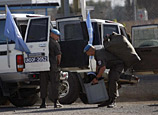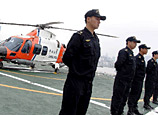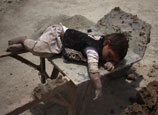
United effort by Beijing and surrounding cities needed to fight pollution, report Jiang Xueqing in Shijiazhuang, Hebei province, and Wu Wencong in Beijing.
Before a heavy rainstorm cleared the skies above Beijing on Sunday and delighted people with a rainbow, the city had been shrouded in smog for a week.
Of the 23 air monitoring stations in the city, 14 detected heavily polluted air in the areas surrounding the capital on Saturday, while seven other areas were deemed to be moderately polluted. The monitors also identified PM2.5 - particles up to 2.5 microns in diameter and able to enter the lungs and blood stream - as the primary pollutant.
Studies by a number of academic institutions have found that on average about 25 percent of PM2.5 in Beijing comes from nearby cities. That means regional collaboration to control air pollution is crucially important, said Zhuang Zhidong, deputy director of the Beijing Environmental Protection Bureau.
"Beijing, Tianjin and Hebei province will eventually conduct joint regional prevention and control of air pollution. Currently, they are still performing basic research within the region to identify mutual influences in the three areas," said Bao Jingling, chief engineer of the Tianjin Environmental Protection Bureau.
He said officials in Hebei province and Beijing have signed an agreement on joint pollution control - including measures such as mutual industrial development - and Beijing and Tianjin will soon sign a similar treaty.
 |
















 Turn white rabbit to 'gold' - A young entrepreneur's goal
Turn white rabbit to 'gold' - A young entrepreneur's goal


![]()
